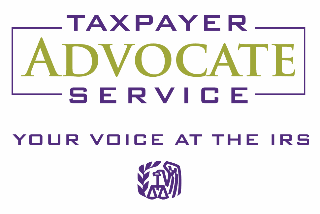IRS
National Taxpayer Advocate Weighs In on IRS Affairs
Just like clockwork, twice a year the National Taxpayer Advocate (NTA) Nina E. Olson delivers reports to Congress on the state of affairs at the IRS. In the mid-year report released on July 7, Olson focused on a new initiative, the Public Forums on ...
Jul. 18, 2016

Just like clockwork, twice a year the National Taxpayer Advocate (NTA) Nina E. Olson delivers reports to Congress on the state of affairs at the IRS. In the mid-year report released on July 7, Olson focused on a new initiative, the Public Forums on Taxpayer Needs and Preferences, as well as the 2016 tax filing season. The new report also identifies priorities for the Taxpayer Advocate Service (TAS) for the upcoming fiscal year (IR-2016-97, 7/7/16).
For the last two years, the IRS has been developing a “Future State” plan that envisions how the tax collection agency will operate in five years and beyond. A key component of the plan is the development of online taxpayer accounts. In her 2015 report to Congress, Olson expressed concerns over budgetary restrictions and the needs of taxpayers who can’t or won’t use the Internet.
To encourage public comments, Olson previously announced plans to hold Public Forums around the country. Currently, the NTA has held eight Public Forums, with several more in the works. The report includes excerpts from the transcripts of the Public Forums, organized around key concerns that Olson has identified.
Olson also announced that the TAS will conduct a nationwide survey of a statistically representative sample of U.S. taxpayers and will hold focus groups on the Future State plan at the Tax Forums this summer.
Based on the results, Olson plans to “set forth our vision of the IRS Future State in the 2016 National Taxpayer Advocate’s Annual Report to Congress. This plan, I can say with confidence, will be based on taxpayers’ needs and preferences, as they and their representatives have expressed them to us.”
Some of the other highlights of the report are as follows:
Overview of filing season: The report says the IRS delivered a generally successful filing season in 2016. Notably, the IRS substantially improved taxpayer service on its toll-free telephone lines, as compared to 2015. In every year since FY 2008, the IRS has received more than 100 million telephone calls. During the 2015 filing season, IRS telephone service reached a low; they answered only 37 percent of taxpayer calls routed to customer service representatives, while the wait time for taxpayers who got through averaged 23 minutes. However, during the 2016 filing season, the IRS answered 73 percent of its calls and the wait time dropped to 11 minutes. Thus, the IRS nearly doubled the percentage of calls answered and reduced wait times by more than half.
Taxpayer Assistance Centers (TACs): The IRS maintains approximately 375 TACs around the country that serve more than five million taxpayers annually. Historically, the TACs were “walk-in sites,” but the IRS intends to eliminate virtually all walk-in service and require taxpayers to schedule advance appointments in all TAC locations by the end of the year.
Under a pilot program testing appointment-only service, 20 percent of taxpayers were forced to wait between 13 and 41 days to obtain an appointment and five percent had to wait more than 41 days. Olson says those wait times are too long for taxpayers with urgent needs.
Tax law questions: Both on its phone lines and in its TACs, the IRS continued recent restrictions on answering tax law questions. During the filing season, the IRS answered only “basic” questions. After the filing season, the IRS is not answering any tax law questions at all, although many taxpayers obtain legally authorized extensions of time to file. Last year, nearly 15 million returns were submitted after the filing season.
Identity theft: The IRS screens all tax returns claiming refunds in an attempt to identify returns submitted by identity thieves. When the IRS identifies a suspicious return, it generally sends the submitter a letter requiring identify verification before it will release the claimed refund. The false positive rate of this program, known as the Taxpayer Protection Program (TPP), was 36.6 percent in 2015. TPP filters stopped nearly 2.1 million returns overall. Thus, with the 36.6 false positive rate, the IRS halted more than 760,000 returns filed by legitimate taxpayers.
U.S. taxpayers living abroad: The number of U.S. citizens living abroad is estimated to be about nine million. Also, many non-citizens have a U.S. tax- filing obligation, as evidenced by the nearly 642,000 Form 1040s filed by nonresident aliens for 2014. Yet taxpayer service options for these taxpayers are limited and continue to be reduced. Taxpayers located overseas generally can’t call U.S. toll-free telephone lines. Almost two years ago, the IRS closed the last four tax attaché posts abroad, eliminating face-to-face service as an option. For the 2016 filing season, the IRS eliminated its Electronic Tax Law Assistance program through which taxpayers could submit tax law questions to the IRS and receive a response via email.
Finally, in addition to the IRS Future State plan, the report identifies and discusses 14 other high priority issues the NTA plans to focus on during the upcoming fiscal year.
The TAS expects to release a second volume of the report later this month. It will contain the IRS’ responses to the administrative recommendations the NTA made in her 2015 Annual Report to Congress.
